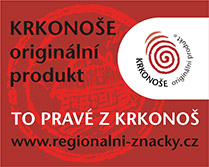Krkonoše's soil
Soil is a natural unit that has developed as a result of long-term earth-forming processes caused by the products of crust weathering on the surface and organic matter. The mountains feature soil zoning with a distinct altitudinal aspect, with the quality of local soils influenced mainly by acidic and mineral-deficient geological bedrock and the cool and very humid climate. The types of soil found in Krkonoše are largely of acidic form, with prevailing types being brown forest soil and humus soil with peaty podzol and podzolic ranker in the lowest and higher altitudes, respectively. Whilst very shallow, rocky frost-sorted alpine soils lie on the highest peaks, there are rare occurrences of rendzina soil on limestone outcrops. Alongside the streams, there can be found alluvial and gley soil of varied thickness. On forest and sub-arctic peat bogs of both plateaus, peaty soils occur, the depth of which does not exceed 2–3 metres. This is a distinctive natural habitat that has allowed unique northern ecosystems to flourish, and is among the most important natural phenomena throughout the Krkonoše Mountains. The mountains' slopes are modelled in some places, such as at Obří důl, Dlouhý důl, and in the valley of the River Lomnička, etc., this happening as a result of massive landslides and the products of weathering – landslides. Unfortunately, the acidity of Krkonoše's soils deteriorated through exposure to air pollution in the late 20th century, with large-scale clearing of dying forest stands beginning to jeopardise soils through what is referred to as intraskeletal erosion.









